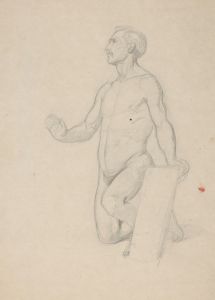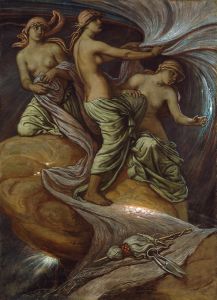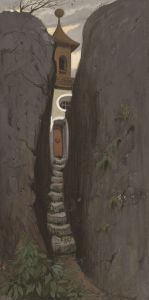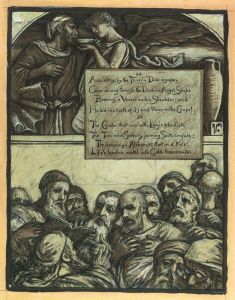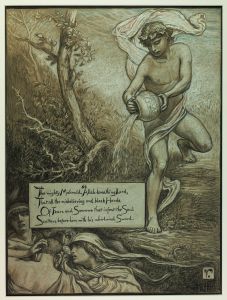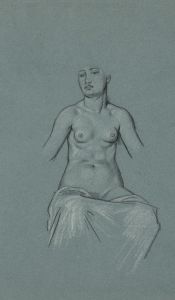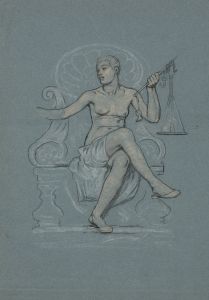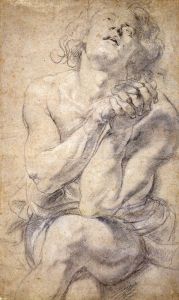
Study after Domenichino
A hand-painted replica of Elihu Vedder’s masterpiece Study after Domenichino, meticulously crafted by professional artists to capture the true essence of the original. Each piece is created with museum-quality canvas and rare mineral pigments, carefully painted by experienced artists with delicate brushstrokes and rich, layered colors to perfectly recreate the texture of the original artwork. Unlike machine-printed reproductions, this hand-painted version brings the painting to life, infused with the artist’s emotions and skill in every stroke. Whether for personal collection or home decoration, it instantly elevates the artistic atmosphere of any space.
Elihu Vedder's Study after Domenichino is a work by the American artist Elihu Vedder (1836–1923), known for his contributions to the Symbolist movement and his distinctive style that often blended classical influences with imaginative and mystical themes. This particular piece reflects Vedder's engagement with the art of the Old Masters, specifically the Italian Baroque painter Domenichino (1581–1641).
The artwork is a study, meaning it was created as a practice or exploration of Domenichino's techniques, compositions, or subjects. Domenichino, whose real name was Domenico Zampieri, was a prominent figure in the Baroque period, celebrated for his frescoes, altarpieces, and mastery of classical ideals. Vedder's study demonstrates his admiration for Domenichino's work and his desire to learn from the traditions of European art, which he encountered during his extensive travels in Italy.
Vedder spent much of his career in Rome, where he immersed himself in the rich artistic heritage of the city. His time in Italy allowed him to study the works of Renaissance and Baroque masters firsthand, and this exposure significantly influenced his artistic development. Study after Domenichino likely reflects Vedder's effort to internalize and reinterpret the techniques and aesthetics of Domenichino, aligning them with his own artistic vision.
The specific details of Study after Domenichino, such as its medium, dimensions, and current location, are not widely documented. However, studies like this were often executed in pencil, ink, or paint, and they served as exercises in understanding composition, anatomy, and the use of light and shadow. Such works were common among artists of Vedder's time, who sought to connect with the artistic traditions of the past while forging their own creative paths.
Elihu Vedder's broader body of work is characterized by a fascination with allegory, mythology, and the metaphysical. While Study after Domenichino may not be one of his most famous pieces, it provides insight into his artistic process and his reverence for the masters who preceded him. Vedder's legacy is most strongly associated with his illustrations for Edward FitzGerald's The Rubaiyat of Omar Khayyam, as well as his paintings and drawings that explore themes of mystery and the human condition.
Due to the limited information available about Study after Domenichino, further research would be required to provide a more comprehensive understanding of its context and significance.





